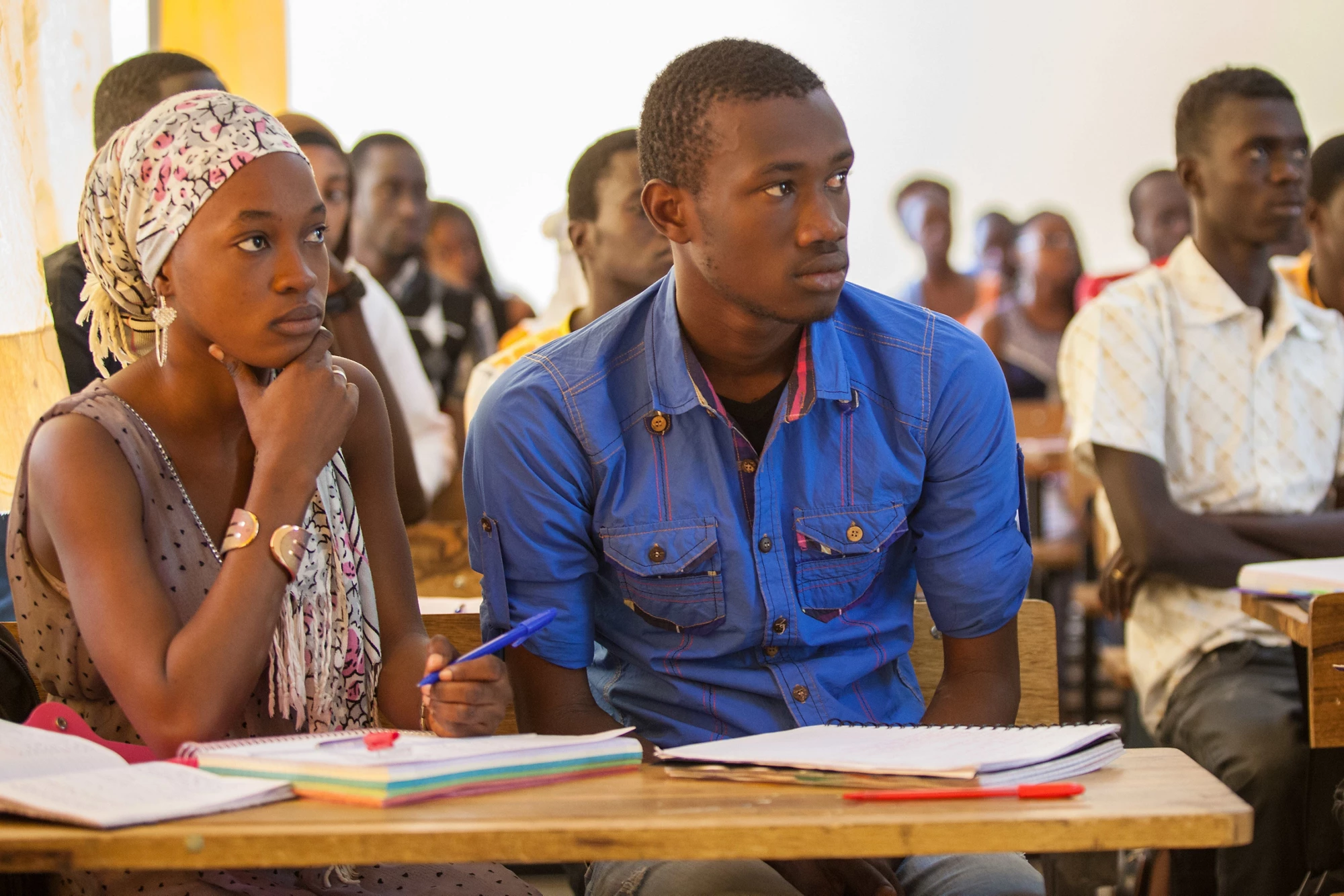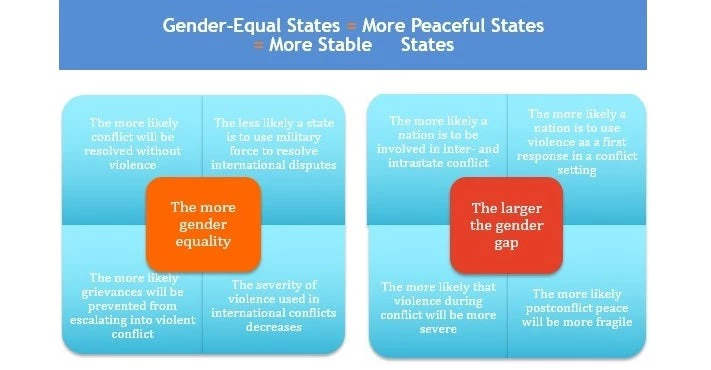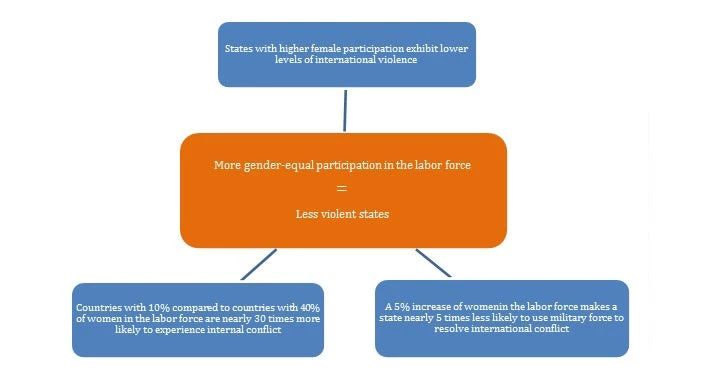
The simple answer is yes. Now, let’s discuss in more depth why gender equality is a key ally in the prevention of violent conflict.
Gender equality is an essential factor in a country’s security and stability. Excluding women from actively participating in society can increase the risk of instability. Gender equality is not only about doing what is right or about social justice; it is also an important element in economic development and a critical predictor of stability and security, which can inform and improve work on conflict prevention.
Research on women, peace, and security provides strong evidence that women’s empowerment and gender equality are associated with more peaceful and stable outcomes (see figure 1). Such findings include:
-
Violence against women is a predictor of whether a society is generally prone to violent conflict.
-
The larger the gender gap (defined as the differences in experiences and opportunities between men and women), the more likely a country is to be involved in inter- and intrastate conflict and to use violence as a first response in a conflict setting.
-
The higher the level of violence against women, the more likely a country may be to not comply with international norms and treaty agreements, and the less peacefully it will operate in the international system.
-
Higher gender equality corresponds with a country’s lower likelihood of using military force to resolve disputes with other countries.
-
The severity of violence used in international conflict decreases with higher gender equality.
-
Countries with low human rights standards, including low standards regarding gender equality, are more likely to have militarized and violent interstate disputes.
Figure 1: The Role of Gender Equality in State Stability

Equality in participation
An important factor related to gender equality for security and development is women’s quality participation in positions of power, including in politics, peace discussions, and negotiations. UN Resolution 1325 recognizes the importance of women’s role in preventing and maintaining peace and security. It also urges states to ensure increased representation of women at all decision-making levels in national, regional, and international institutions, as well as in mechanisms for preventing, managing, and resolving conflicts.
Research has yielded the following findings in this area:
-
Including women in peace processes has a positive impact on the durability of peace agreements, which thus prevents conflict from reoccurring.
-
Including women as negotiators, mediators, signatories, and witnesses increases the probability of an agreement lasting at least two years by 20 percent, and the probability of it lasting at least 15 years by 35 percent.
-
There is a positive relation between the participation of women’s groups and peace deal results. When women are less involved, agreements are reached less often, and the likelihood of reaching an agreement is even lower when women groups are not involved at all.
Gender economic equality
Women’s economic empowerment has a multiplier effect on a country’s local and national well-being. Empowering women and promoting gender equality is crucial to accelerating development and producing more equal societies, which are important elements in preventing violent conflict. Some of the research findings regarding gender economic equality include:
- States with higher female participation in the labor force exhibit lower levels of international violence, and are less likely to use military force to resolve international conflict.
- Countries with 10 percent of women in the labor force compared to countries with 40 percent of women in the labor force are nearly 30 times more likely to experience internal conflict (see figure 2).
- If men and women participated equally in the economy, the results would add up to US$28 trillion, or 26 percent, to annual global GDP by 2025.
Figure 2: Gender-Equal Participation in the Labor Force

The evidence is clear: Having more gender-equal societies results in more stable and peaceful states.


Join the Conversation